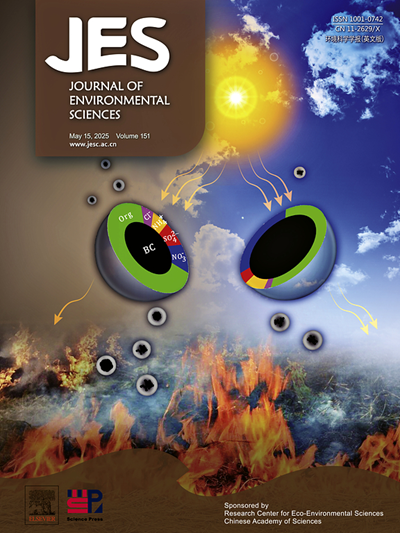Impact of open-field biomass burning on regional air quality in Northern India
IF 6.3
2区 环境科学与生态学
Q1 ENVIRONMENTAL SCIENCES
引用次数: 0
Abstract
Over the past decade, biomass burning has emerged as one of the main polluting events in northern India. It is one of the major sources of brown carbon (BrC), the light-absorbing organic carbon component of PM2.5. Most studies on the impact of biomass burning in India are based on source locations or urban areas; very little is known about its effects on a regional background location. We examine the effect of biomass burning on regional air quality and co-occurring meteorological factors. Year-long PM2.5 levels and light absorption by carbonaceous aerosols at 880 nm and 370 nm were measured at Rohtak, a regional background location. Results showed that post-harvest biomass burning in the Punjab-Haryana region affects the regional air quality with a lead of one to two days. A comparison of dispersion-normalized concentrations showed that open-field biomass burning not only affects regional air quality in the post-monsoon season (kharif crops) but is also a dominant source of PM2.5 in the post-harvest summer season (rabi crop). A significant (p < 0.05) difference is observed in PM2.5, babs-880, and babs-370 between biomass burning days and non-biomass burning days during the kharif and rabi harvest seasons. Regression analyses confirm that in summer, regional PM2.5 and light absorption by aerosols are influenced more strongly by post-harvest burning of rabi crops. However, adverse meteorology plays a more dominant role in the post-monsoon season than biomass burning. These findings underscore the need for better policy interventions to curb biomass burning and improve air quality during both harvest seasons.

露天生物质燃烧对印度北部地区空气质量的影响
在过去的十年里,生物质燃烧已经成为印度北部的主要污染事件之一。它是PM2.5中吸收光的有机碳成分棕色碳(BrC)的主要来源之一。大多数关于印度生物质燃烧影响的研究都是基于来源地点或城市地区;人们对其对区域背景位置的影响知之甚少。我们研究了生物质燃烧对区域空气质量和共生气象因素的影响。在区域背景位置Rohtak测量了全年PM2.5水平和碳质气溶胶在880 nm和370 nm的光吸收。结果表明,在旁遮普-哈里亚纳邦地区,收获后燃烧生物质对区域空气质量的影响为1 - 2天。弥散归一化浓度的比较表明,露天生物质燃烧不仅影响季风后季节(丰收作物)的区域空气质量,而且也是收获后夏季(拉比作物)PM2.5的主要来源。(p <;在收割季节,生物质燃烧日和非生物质燃烧日PM2.5、babs-880和babs-370的差异为0.05)。回归分析证实,在夏季,区域PM2.5和气溶胶吸收受收获后焚烧的影响更大。然而,在季风后季节,不利气象比生物质燃烧发挥更大的作用。这些发现强调需要更好的政策干预,以在两个收获季节遏制生物质燃烧和改善空气质量。
本文章由计算机程序翻译,如有差异,请以英文原文为准。
求助全文
约1分钟内获得全文
求助全文
来源期刊

Journal of Environmental Sciences-china
环境科学-环境科学
CiteScore
13.70
自引率
0.00%
发文量
6354
审稿时长
2.6 months
期刊介绍:
The Journal of Environmental Sciences is an international journal started in 1989. The journal is devoted to publish original, peer-reviewed research papers on main aspects of environmental sciences, such as environmental chemistry, environmental biology, ecology, geosciences and environmental physics. Appropriate subjects include basic and applied research on atmospheric, terrestrial and aquatic environments, pollution control and abatement technology, conservation of natural resources, environmental health and toxicology. Announcements of international environmental science meetings and other recent information are also included.
 求助内容:
求助内容: 应助结果提醒方式:
应助结果提醒方式:


